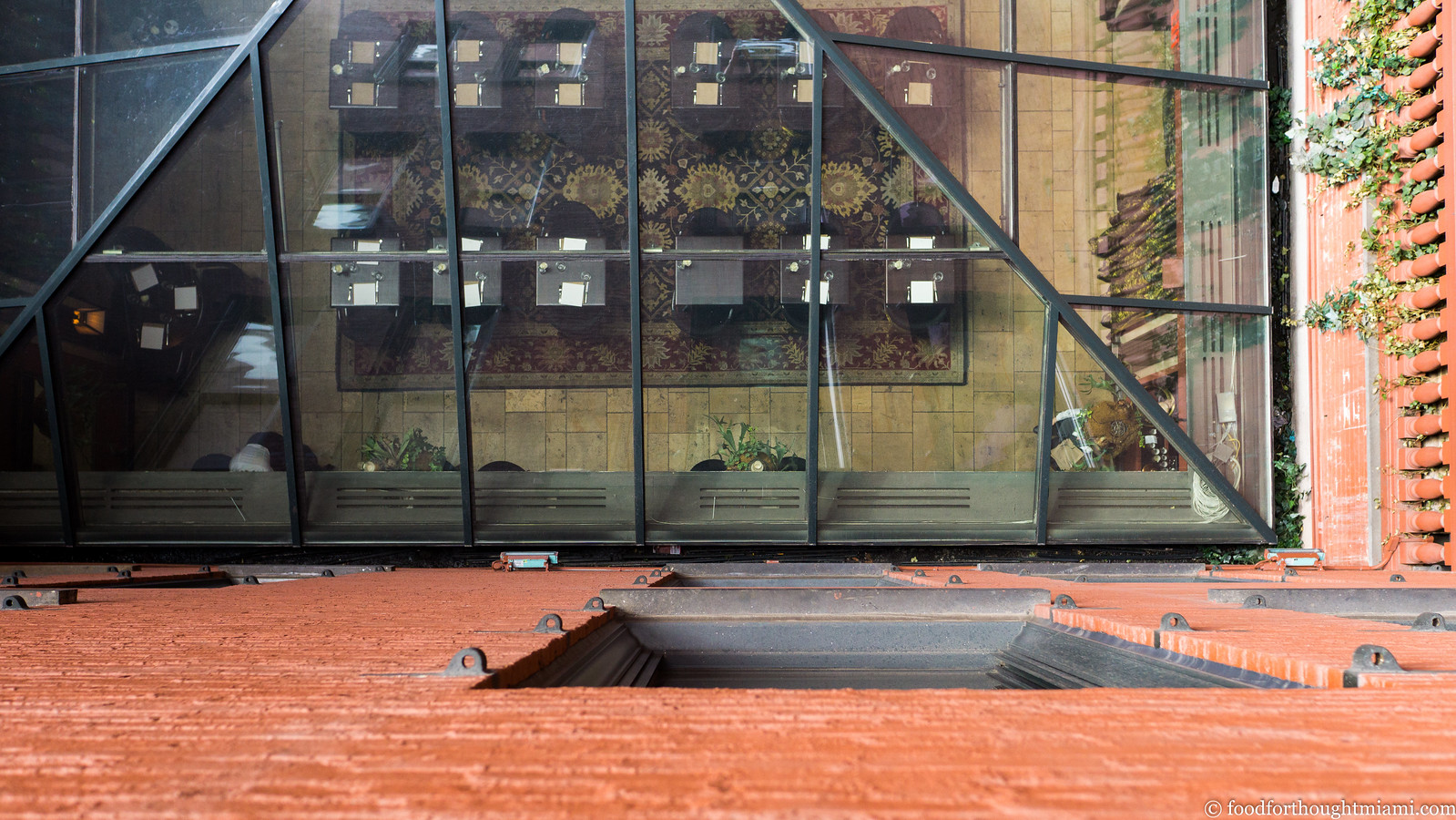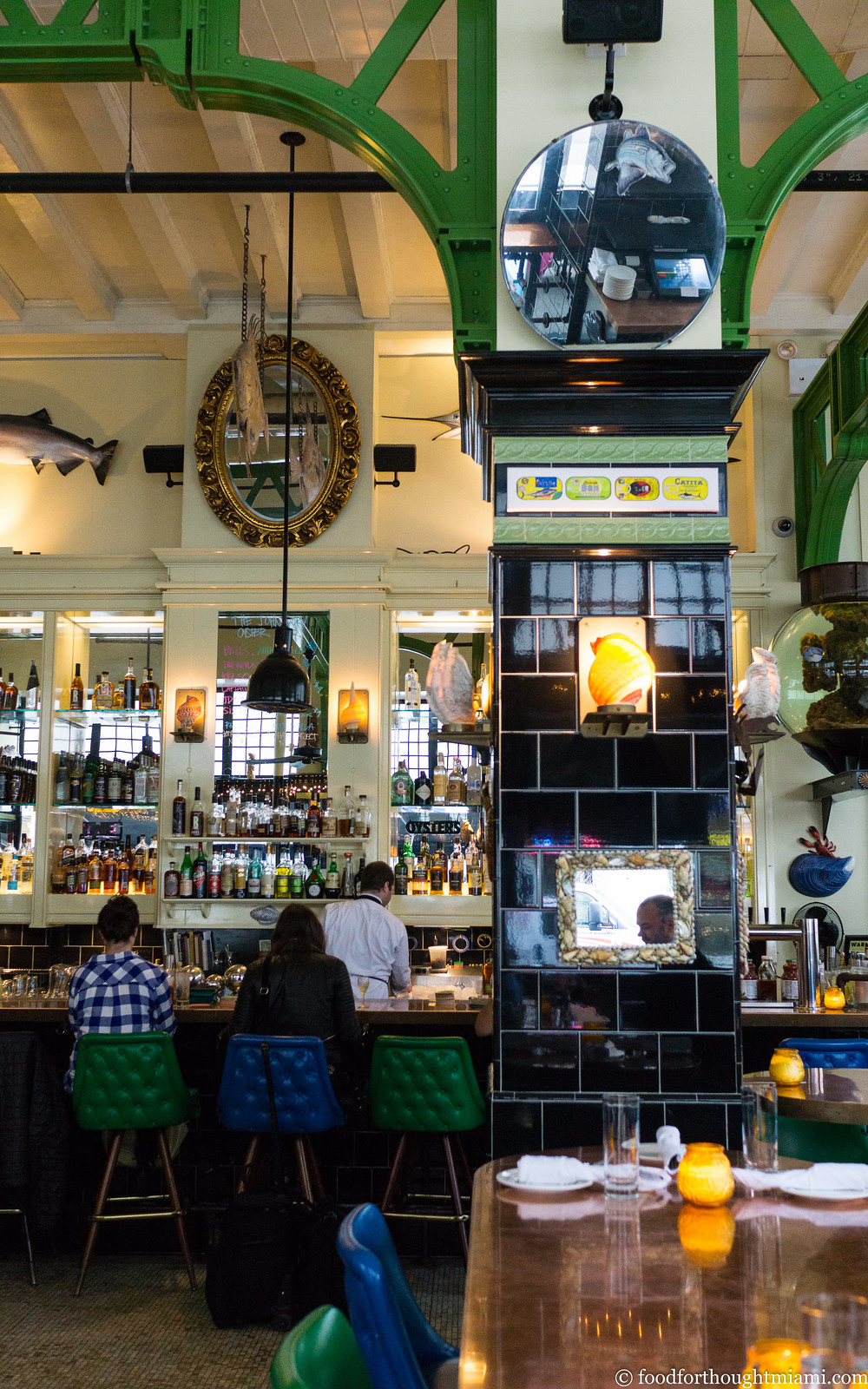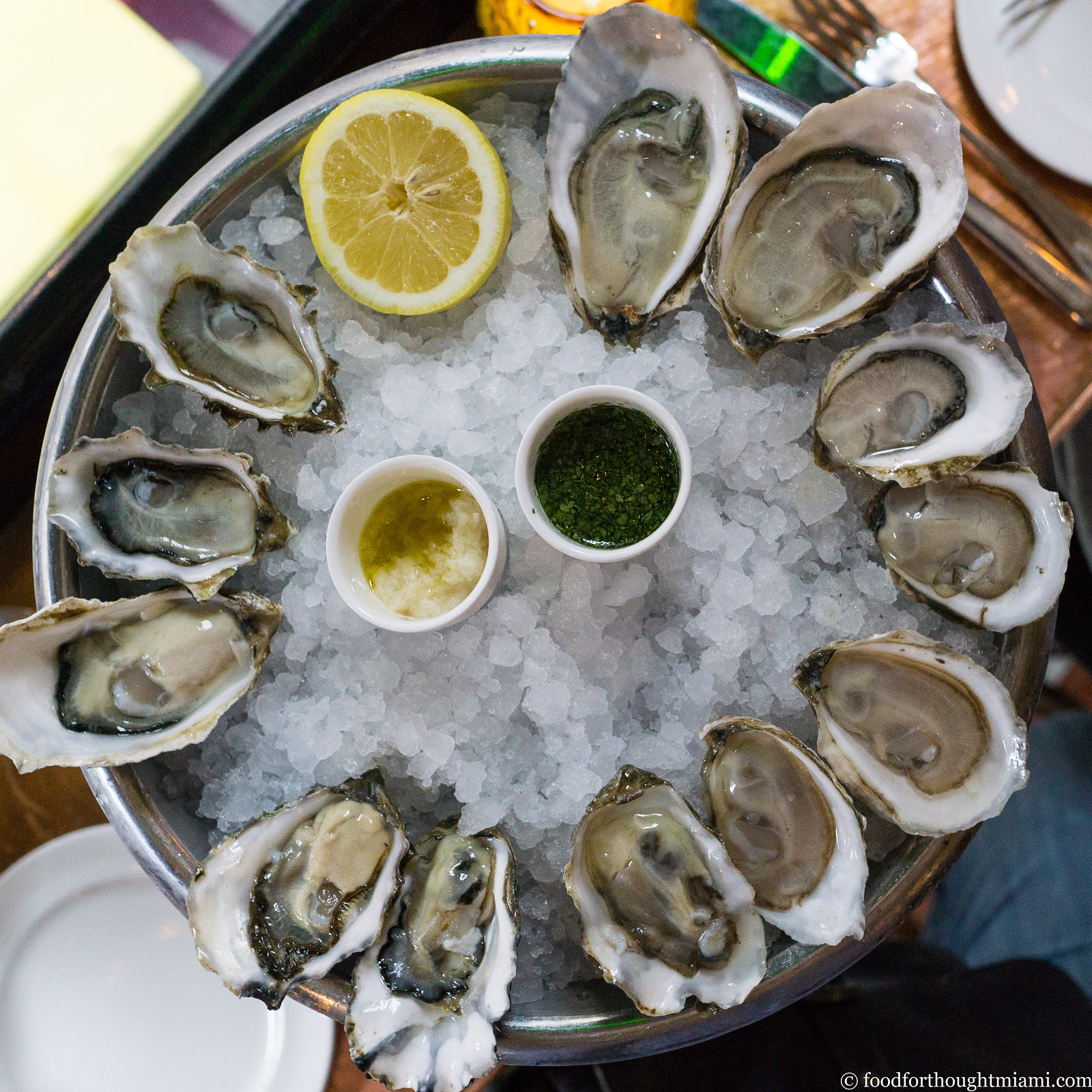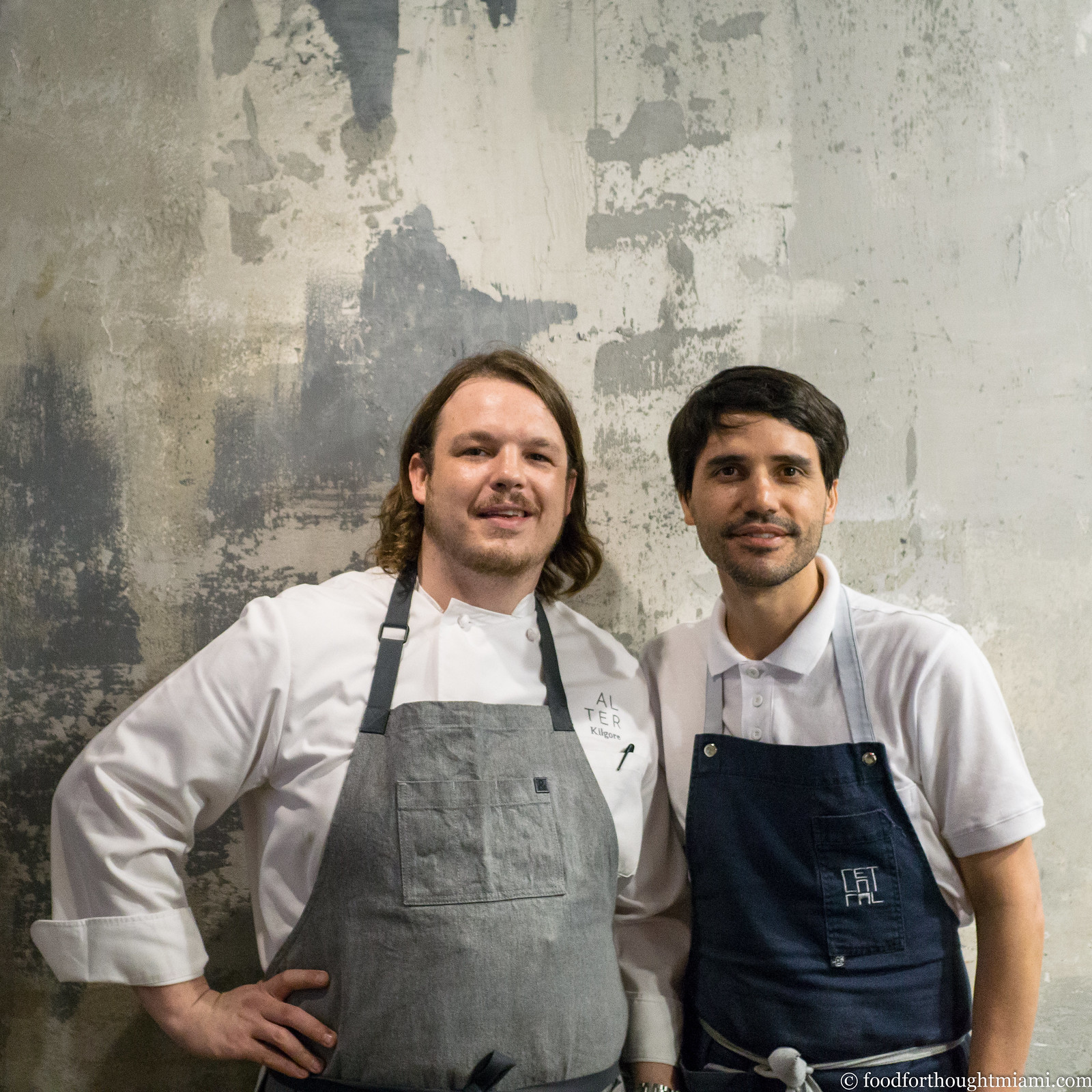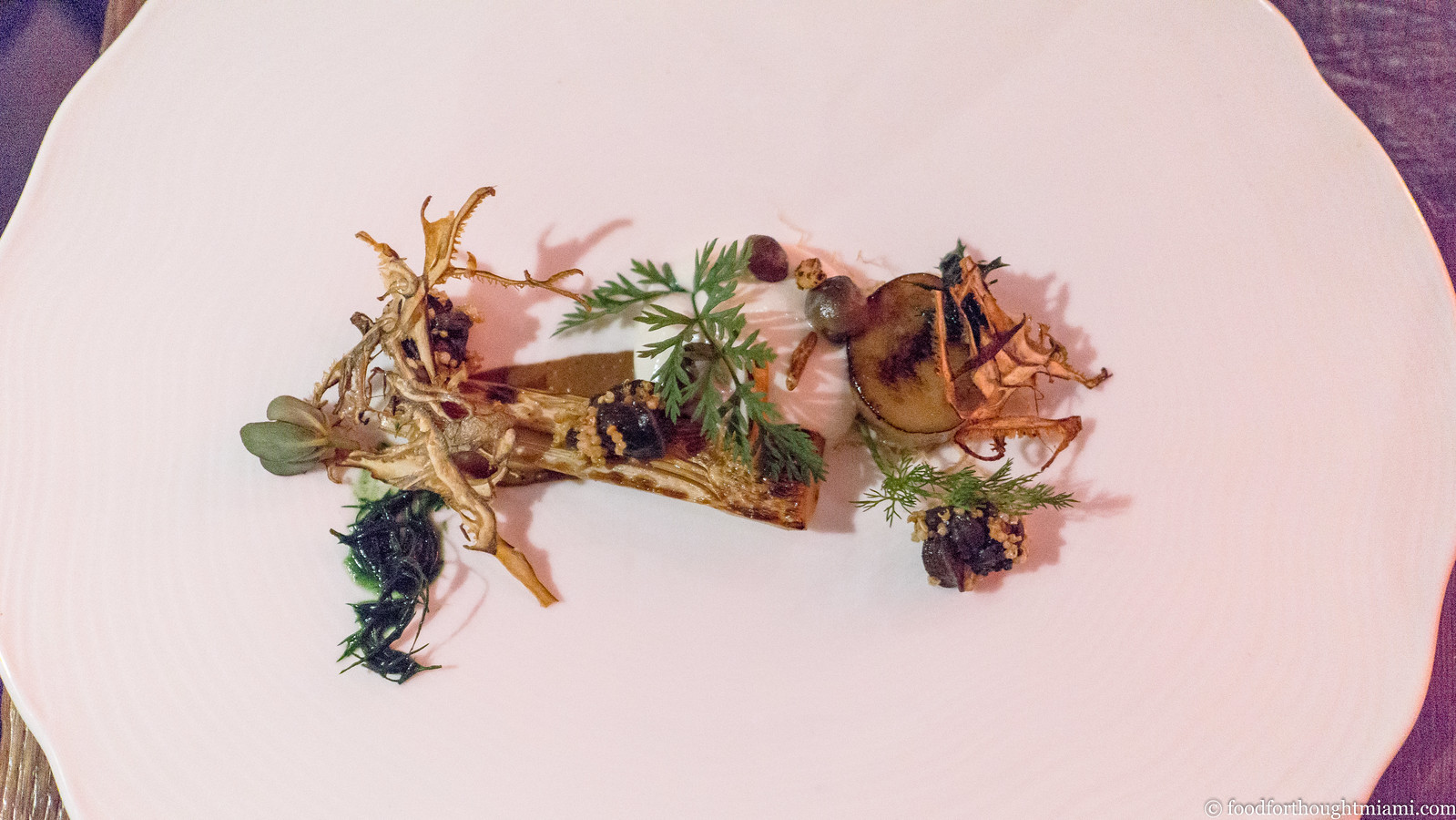Wednesday, April 6, 2016
travelogue: a weekend of eating in New York City
Whenever we visit New York City, there's a constant tug of war between the new and the familiar. We're typically only in the city for a couple days at a time, and the list of places I'd like to try runs into the hundreds; but there are also the places to which we like to return, rituals that provide reward and reassurance through repetition.
When we can do so for a not-astronomical rate, we like to stay at The NoMad, which aside from having a great restaurant and a great bar,[1] also has posh but comfortable rooms, great service, and a central location (28th and Broadway) from which both Lower Manhattan and the heart of Midtown are within range of a long walk. That's the view from our room down into the dining room at the top of this post; the view at ground level is equally nice.
(You can see all my pictures from The NoMad in this NoMad flickr set).
And when we stay at the NoMad, and arrive mid-afternoon, we like to drop our bags and get a snack at the John Dory Oyster Bar, April Bloomfield's seafood emporium one block up. Since it's between services, there's only a limited menu, which is fine: some oysters, a carta di musica, and a couple other fishy things (this time, a smoked char pâté with parker house rolls and half of a poached lobster) tide us over in very happy fashion until dinner.[2]
(You can see all my pictures from the John Dory in this John Dory Oyster Bar flickr set).
The John Dory Oyster Bar
1196 Broadway @ 29th Street, New York, NY
212.792.9000
For dinner, though, something new (for us anyway): Sushi Ko, an 11-seat, omakase only sushi den on the Lower East Side. Part of the draw for me was that the itamae, John Daley, was a mentee of Masato Shimizu, the chef of 15 East where we'd had an excellent meal a couple years ago.[3] After working at 15 East, Daley went to Japan and worked for Chef Masa's mentor, Rikio Kugo of Sukeroku. At his own place – which he runs pretty much as a solo operation, which just one server pouring drinks and handling the check – he serves a $150 procession of about a dozen and a half rounds of nigiri.[4]
His rice I thought was very good: faintly warmer than body temperature, each grain perfectly distinct without falling apart, seasoned just enough to enhance but not overwhelm the flavor of the rice itself. Though Daley has been characterized as something of a renegade, he is not the type that festoons his neta with a blizzard of different garnishes. Some were smoked or quickly seared, but otherwise his fish was touched only with a delicate swipe of wasabi, a brush of soy sauce or a sprinkle of salt, and maybe a touch of citrus juice or zest. I did find he was a bit heavy-handed on the salt, but this was something I could have remedied had I recognized it earlier: early in the meal, he invited each of us to ask him to calibrate his seasoning.
I liked how his selection of fish had themes: kanpachi fresh in one instance and lightly smoked in another; shima aji and aji in procession; three different kinds of uni (California uni, smoked, as nigiri; Maine uni in a maki; Japanese uni as gunkan maki) over the course of the meal; though I wished one of those themes hadn't been (endangered) wild caught Atlantic bluefin tuna.[5]
New York Sushi Ko
91 Clinton Street, New York, NY
(continued ...)
Monday, March 21, 2016
best thing i ate last week: everything at the Central + Alter dinner
Don't make me pick a favorite. I just can't.
Last Tuesday was the second collaborative dinner hosted at Alter restaurant by Chef Bradley Kilgore. This time, he brought in Chef Virgilio Martinez of Central in Lima, Peru. These kinds of team-ups can be something of a crap shoot for the diner: even with talented chefs, it's unpredictable how effectively their styles will mesh, or how well someone's cooking may show on the road.
Yet this dinner was so in tune that for most of the night I couldn't tell who had cooked which dish, other than that Virgilio's sometimes had a tell: if I had to google an ingredient, it was one of his.[1] But regardless of the creator, everything - everything! - at this meal was exceptional. If I had to narrow it down to two:
(You can see all the pictures in this Central @ Alter flickr set.)
"Valley Between Andes" – I later figured out that Martinez's menu at Central features dishes inspired by the products of different elevations of the Peruvian topography. This one included avocado, tree tomato (a/k/a tamarillo), and kiwicha (amaranth seeds). The avocado was so creamy and rich that it almost ate like tender braised beef, napped with a tangy sauce and speckled with the nutty, quinoa-like kiwicha, with shards of translucent, herb-dotted crackers for some textural contrast.
"Fallen Tree" – Brad started with a caramelized tranche of heart of palm as the base of the dish, with the other components evoking a tropical forest floor: snails, dehydrated mushrooms, a tangle of green (seaweed?) moss, a pouffe of spring garlic mousse with pickled honshimeji mushroom "spores" poking up out of it.
But these are just examples – every course of this menu impressed. It's unusual to have so many dishes that simultaneously achieve the delicious, the beautiful, and the unexpected all at once.
[1] I.e., kiwicha (amaranth seed, a pseudocereal like quinoa), tree tomato (which I'm more familiar with as "tamarillo"), airampo (a magenta hued prickly pear fruit), chaco clay (an edible clay which apparently has been consumed since pre-Colombian times).
Monday, March 14, 2016
best thing i ate last week: razor clams and rice at Bazi "kaiseki" dinner
I was surprised when I heard that pasta master Michael Pirolo of Macchialina was opening an Asian-inspired restaurant – Bazi. Pirolo's culinary upbringing is Italian through and through. He was raised in Italy, went to culinary school in Torino, and did apprenticeships in Bologna and the Piemonte. The first kitchen he ran as chef de cuisine was Scott Conant's Scarpetta, then he went out on his own with Macchialina (originally opened with the Pubbelly boys, but from whom he split a few years ago).
I didn't see how an Asian restaurant fit with that resume and, to be very candid, figured the motivation was money rather than passion. My theory was thrown into doubt, though, when Bazi recently announced it would start doing a special "kaiseki" style dinner on Wednesday nights for up to eight people at the downstairs bar. Not that $150 per person is exactly giving food away, but considering it's for a ten-course dinner inclusive of drink pairings, tax and tip, it doesn't seem like much of a money-maker either.[1] This is the kind of thing a chef does because they really want to, and maybe because they're a little crazy.
Let's not dwell too long on how much this truly resembles a traditional Japanese kaiseki dinner (short answer: not too much).[2] Instead, let's talk about the best thing I ate last week: the clams and rice dish Pirolo served as one of the courses.
(You can see all my pictures in this Bazi Kaiseki Dinner flickr set).
In this one dish, Pirolo ties together his Italian background and his Japanese ambitions. Diced razor clams are combined with chewy but tender viaolone nano rice, all served in the clam's shell. The rice is prepared in classic "all'onda" fashion, and bound with the clams by an uni vinaigrette which further highlights the flavors of the sea. A shower of fresh lemon balm adds a bright, herbaceous, citrusy note. It's a beautiful dish.
It was a close call between this, the chicken wing stuffed with five-spiced foie gras torchon, the black cod stuffed with Key West shrimp and Alaskan king crab with a nasturtium and avocado purée, and the roasted squab served with a coconut and ginger rice fritter. If that many dishes were in the mix, that's the sign of a pretty good meal. If you're interested, maybe check it out yourself this coming Wednesday.
Bazi
1200 Collins Avenue, Miami Beach, Florida
305.695.0101
[1] Full disclosure: Chowfather and I were guests of the house for this first of their Kaiseki Dinner Series. Had I been spending my own hard-earned dollars, however, I'd still have felt this was a pretty good value. Ten courses, several featuring at least some small doses of luxury ingredients like osetra caviar, uni and foie gras. A pairing with each course by Will Rivas, the talented beverage director of Bazi and Macchialina, including cocktails, sakes (some fruit-infused in-house), smartly selected wines, a rare Japanese beer, and a couple JoJo teas. With tax and tip included. You can spend $150 on a meal in Miami and do far worse.
[2] Longer answer? To my admittedly extremely limited knowledge, most of which is derived from the gorgeous book "Kaiseki" by Yoshihiro Murata (of Kikunoi restaurant) and a couple meals in Japan, there are a few key components to kaiseki. One is the procession of courses, which typically follows a certain pattern though there is some room for variation. Another is the importance of seasonality, with dishes and presentations that attempt to capture a particular moment in time (and consequently are often locally sourced as well). Finally, and linked indelibly to the seasonality component, is the focus on the ingredients themselves; presentations and plating can be rather ornate, but the dishes themselves are often quite elemental – not so much austere as serene, if that makes any sense.
Pirolo's menu paid some heed to the traditional kaiseki progression, without being mindlessly obedient to it. He started with "sakizuke," effectively an amuse-bouche, followed by "hassun," typically an assortment of several different seasonal items, then a sashimi course. Where there are usually then a series of simmered dishes and soups, often followed by a grilled fish, Pirolo took a detour through a series of dishes that didn't really have much traditional antecedent. But whatever – they were some of the best courses of the night. I did miss one of my favorite parts of the typical progression: a rice dish, typically served with pickles and soup, as the final savory item before dessert.
But what I felt was missing more than the progression was the seasonal, local element. There were lots of great dishes; but the ingredients were from literally all over the map, not much of it local, and not seemingly connected much to the season. Perhaps on a related note, too many dishes seemed to be more about the preparations than the ingredients themselves. For instance, with three fish used in the sashimi course, none were local and none were actually served raw: the arctic char was cured, the escolar was marinated in koji, the eel was grilled. This was also probably my least favorite course of the evening; while I have huge respect for Pirolo bringing in live eels and tackling the task of butchering and preparing them from scratch, I'm not convinced the end result is better – or more to the point, more in the spirit of "kaiseki" – than a simple preparation of pristine, fresh local fish.
Personally, I'd love to see a menu that's more about the ingredients, and less about what's been done with them. In this sense, I think Chef Kevin Cory's omakase dinners at Naoe – though he doesn't call them "kaiseki" – are actually much closer to that spirit. And if Pirolo called these "omakase" dinners rather than "kaiseki," I could spend a lot less time spinning wheels in my own head over whether that term really makes any sense here, and instead just focus on the food, which is what I'm really trying to do in this post, other than in this overlong footnote.
[2] Longer answer? To my admittedly extremely limited knowledge, most of which is derived from the gorgeous book "Kaiseki" by Yoshihiro Murata (of Kikunoi restaurant) and a couple meals in Japan, there are a few key components to kaiseki. One is the procession of courses, which typically follows a certain pattern though there is some room for variation. Another is the importance of seasonality, with dishes and presentations that attempt to capture a particular moment in time (and consequently are often locally sourced as well). Finally, and linked indelibly to the seasonality component, is the focus on the ingredients themselves; presentations and plating can be rather ornate, but the dishes themselves are often quite elemental – not so much austere as serene, if that makes any sense.
Pirolo's menu paid some heed to the traditional kaiseki progression, without being mindlessly obedient to it. He started with "sakizuke," effectively an amuse-bouche, followed by "hassun," typically an assortment of several different seasonal items, then a sashimi course. Where there are usually then a series of simmered dishes and soups, often followed by a grilled fish, Pirolo took a detour through a series of dishes that didn't really have much traditional antecedent. But whatever – they were some of the best courses of the night. I did miss one of my favorite parts of the typical progression: a rice dish, typically served with pickles and soup, as the final savory item before dessert.
But what I felt was missing more than the progression was the seasonal, local element. There were lots of great dishes; but the ingredients were from literally all over the map, not much of it local, and not seemingly connected much to the season. Perhaps on a related note, too many dishes seemed to be more about the preparations than the ingredients themselves. For instance, with three fish used in the sashimi course, none were local and none were actually served raw: the arctic char was cured, the escolar was marinated in koji, the eel was grilled. This was also probably my least favorite course of the evening; while I have huge respect for Pirolo bringing in live eels and tackling the task of butchering and preparing them from scratch, I'm not convinced the end result is better – or more to the point, more in the spirit of "kaiseki" – than a simple preparation of pristine, fresh local fish.
Personally, I'd love to see a menu that's more about the ingredients, and less about what's been done with them. In this sense, I think Chef Kevin Cory's omakase dinners at Naoe – though he doesn't call them "kaiseki" – are actually much closer to that spirit. And if Pirolo called these "omakase" dinners rather than "kaiseki," I could spend a lot less time spinning wheels in my own head over whether that term really makes any sense here, and instead just focus on the food, which is what I'm really trying to do in this post, other than in this overlong footnote.
Subscribe to:
Comments (Atom)

